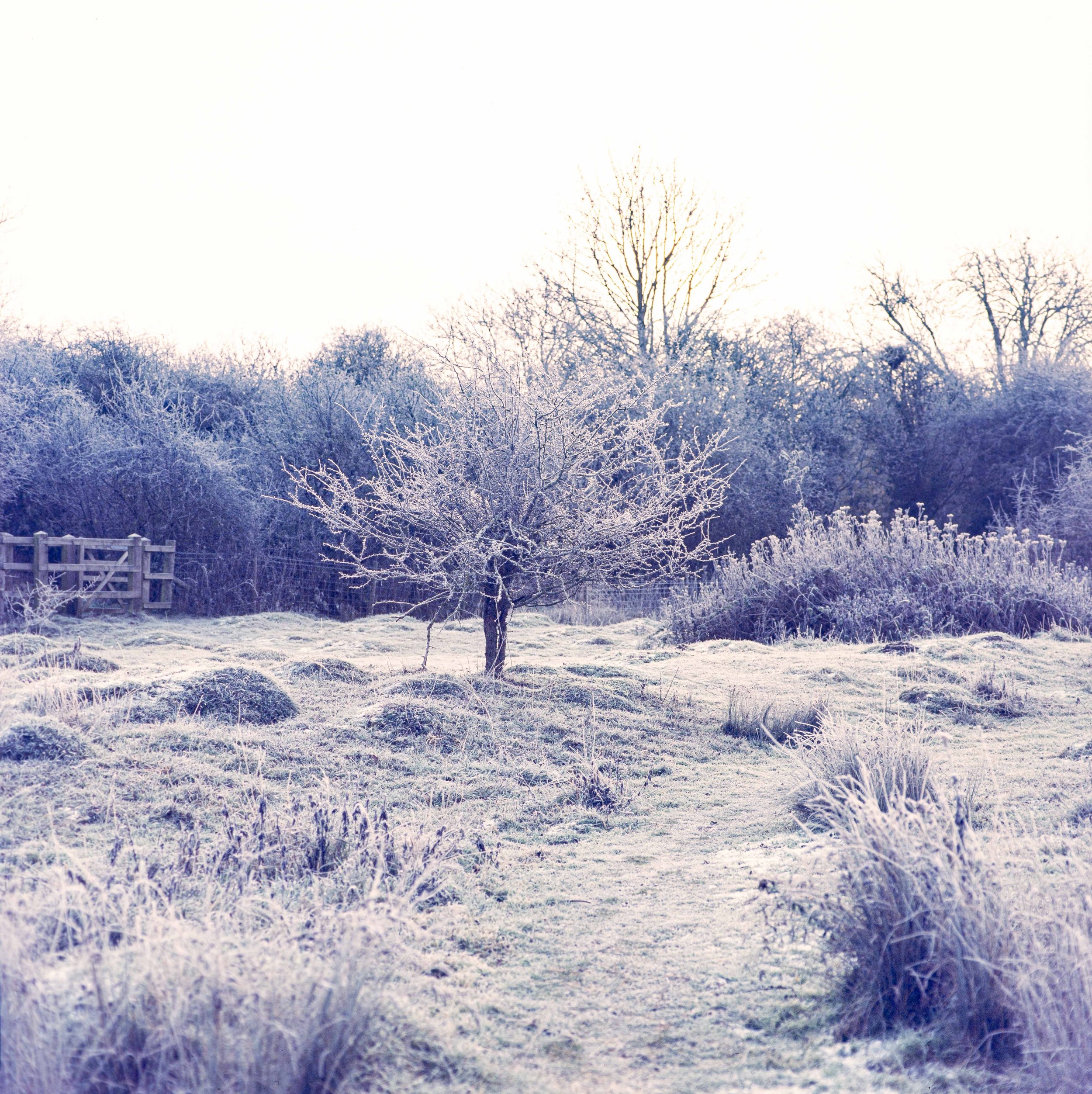Shooting Autumn with Expired Kodak Ektachrome 100 GX
This scene caught my eye as soon as I saw it. This lone fallen silver birch surrounded by the yellowing bracken. 1s 150mm F6.7 Bronica SQ-A.
With slide film becoming more and more expensive (and Fuji possibly ending production completely), I’ve been hunting around online and on market stools for expired rolls which come in a lot cheaper. As I’ve spoken about in previous blogs, shooting expired negative film (be that black and white or colour) is simple enough. Just hit it with a bit of exposure compensation and you can usually get good results, even if the colours can come out a little faded or off.
This image shows off the shadows shifting heavily to blue due to the expired nature of the film. 1/2s 80mm F5.6 Bronica SQ-A.
Expired slide film though is much more challenging. Overexposing it is a very bad idea and it’s also much harder to scan which makes any colours shifts or incorrect exposures difficult to deal with. But as ever it provides a fun experiment and sometimes you can get much better results that you originally hoped for, which probably comes down to the potluck of how the previous owner(s) stored it.
A hard frost really enhanced the bright red of these berries. 8s 110mm F8.0 Bronica SQ-A.
Most of the expired slide film I’ve shot with previously has been Fujifilm, but the one time I shot expired Ektachrome it did not go very well. I suppose it shouldn’t have come as a great surprise given the film was more than forty years old. This time around I was shooting with Kodak Ektachrome 100 GX which only expired in 2007, a mere fifteen years before I shot this roll. Before Ektachrome was originally discontinued in 2012 it came in multiple forms. E100G, E100GX and E100VS. E100G was the standard film with moderate colour and saturation, E100GX had a warmer colour balance than normal G and E100VS had more vivid and saturated colours.
I took two shots of the autumnal leaf litter. One without a polariser… 2s 110mm F11 Bronica SQ-A.
…and one with a polariser. Notice how much of a difference there is in colour and contrast. 2s 110mm F13 with polariser Bronica SQ-A.
So how would this roll of E100GX hold up? I was hoping well as I had bought a five pack of 120. All images were shot on my Bronica SQ-A and my subjects were the cold, natural subjects of Autumn. Overall, I’d say it was a mixed bag. I was happy with the detail of the images, I think that has mostly survived intact, but the colours were quite off. Unlike with my experience with Fuji slide films, the colours didn’t shift towards magenta, but instead towards blue. This makes a lot of sense given the colour science behind the different companies and also that the ancient Ektachrome 64 I shot before had shifted completely blue. Certainly, usable for fun shooting, but not something I’d want to shoot anything serious with.
With the limited dynamic range of slide film the sky was fully blown out over this frosted landscape. Another good example of how shifted to blue the shadows have become. 1/60s 110mm F8.0 Bronica SQ-A.
Detail remains good despite the film’s age. 1/2s 110mm F6.7 Bronica SQ-A.
I think after this experiment and the other ones I will talk about in the future, I’m going to largely avoid buying much more expired slide film, unless I know for definite it has been cold stored or if it’s only a few years out of date. It can be fun to shoot, but processing costs are higher, and results are less guaranteed compared to shooting expired negative films. Still, I’ve got plenty of it on ice, so I’ve got a fair bit to shoot through and with that comes many more blogs to write. As ever the main thing is just to enjoy it.
The shift to blue in the background really helps bring out the warm tones of the subject. 1/4s 250mm F5.6 with polariser Bronica SQ-A.
The contrast is often also softer than you would expect from in-date slide film, even after some digital correction. 1/30s 50mm F3.5 with polariser Bronica SQ-A.
If you have enjoyed this blog then please consider leaving a tip below.








